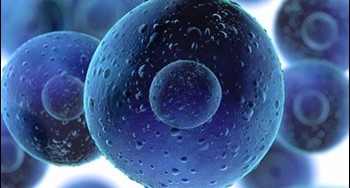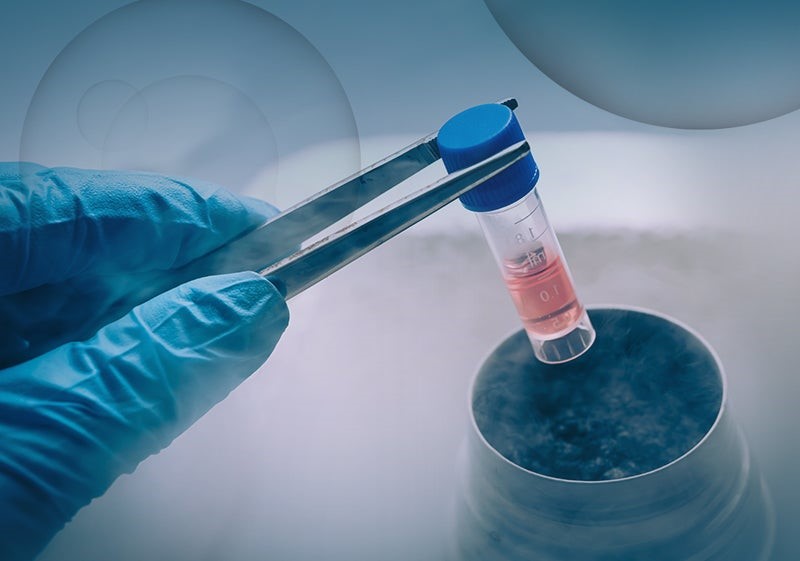
The following article covers the subject of stem cell therapy, also known as regenerative medicine. We will explain what stem cells are and what stem cell therapy is, what it can be successful in treating and how much it costs. We will also recommend that you consider stem cell therapy at HGH Health, a specialist medical services provider in IRAN.

What is Stem Cell Therapy?
Stem cell therapy is a revolutionary medical procedure that makes use of stem cells to treat many different diseases and chronic ailments. The best way to describe stem cells is to state they are the ‘master cells’ of the body, the raw material from which other cells are generated.
In the body – and in the right laboratory conditions – stem cells can be grown and nurtured, and as they do the stem cells divide: these are called ‘daughter cells’. These daughter cells then become either a new stem cell, or take the form of cells with a specialist function: blood cells, brain cells, muscle cells – all of the functional cells in the body.
The advantage of research into stem cells is that scientists have been able to observe this process and get a better understanding of how and why diseases occur. They also discovered that by growing new stem cells and directing them to become a particular cell – a practice that is performed by specialist laboratories – they then have new active cells that can be used to replace damaged cells in many areas of the body. These cells then help regenerate and repair damaged tissue, hence ‘regenerative medicine’.
Stem cells can be taken from the umbilical cord blood, which is the most popular method of extraction, for use in laboratories to nurture stem cell therapy. However, adult stem cells are required for some therapies, and these are usually extracted from the bone marrow. Let’s talk about how the new cells get into the body.
How is Stem Cell Therapy Applied?
The method of applying stem cells depends upon the disease or ailment being treated. For example, if a patient has a heart defect, the cultured heart tissue cells will be injected into the heart tissue directly. These new cells then begin to do their work in regenerating the heart muscles and tissue, improving the heart's condition. Should the patient be suffering from a form of cancer, then the cells will be injected into the area where the cancerous tumor has been removed in order to repair those cells. The procedure is performed by a trained, qualified, and experienced medical professional who is licensed to perform stem cell therapy.
For Which Diseases Can Stem Cell Therapy Be Used?
Stem cell therapy has been a major breakthrough in the medical world and can be used to treat many different diseases and ailments that are the result of cell and tissue damage. That daughter cells can be ‘directed’ to become specific types of cells lends the method more variability. The following are a few of the conditions that stem cell therapy can be successful in treating.
Stem Cell Therapy for Cancer Types
Cancer in some forms can be treated with stem cell therapy. The main types of cancer that use this type of treatment are leukemia and lymphoma, although it can be used for certain other types. These are blood-related cancers hence the cells are directed to become blood cells and regenerate the damaged or mutated blood cells that cause the cancer.
Stem Cell Therapy for Crohn’s Disease
Recent research has discovered that stem cell treatment can be successful in treating patients with Crohn’s Disease, this being a major breakthrough in this area of medicine. Effectively, the fresh cells are used to ‘restart’ the body’s immune system and reduce the effects of the disease. This method can use adult or umbilical stem cells for culture.
Stem Cell Therapy for Rheumatoid Arthritis
Stem cell research has also been focused on the treatment of rheumatoid arthritis and other conditions that are the result of inflammation of damaged tissue. As the stem cells can be injected into the damaged areas, they then begin working to reduce the effects of the inflammation by regenerating and repairing the tissue. This alleviates the pain that chronic sufferers are prone to.
Stem Cell Therapy for Other Conditions
Many other diseases, especially those that are blood-related and those that are degenerative diseases, may be treated using stem cell therapy. The therapy has been used in patients with heart disease and other conditions, to treat cartilage damage, in unusual conditions such as Buerger Disease, for spinal cord damage, optic neuropathy, for people with facial deformities, and even for Tennis Elbow. COPD sufferers can also benefit from stem cell treatment, as can those with MS and similar conditions. Potentially, any disease or condition that results from tissue damage may be a subject of stem cell therapy. The future of this type of treatment looks very bright and provides hope for sufferers of many ailments.
What is the Cost of Stem Cell Therapy?
It is useful to understand that stem cell therapy is a relatively new area of medical treatment and that research is ongoing into many different potential uses for this type of therapy. However, more people than ever are choosing to go down this route, even for simple treatments. The likes of Tennis Elbow, as mentioned above, may be treated with perhaps a single injection into the joint – as can some forms of arthritis – yet even this one simple treatment may cost around $1000. The high cost is because of the need to obtain the stem cells and grow the new daughter cells, and then direct them to become the required type of cell, which is a highly specialized routine.
More in-depth and advanced treatments may take the cost into tens of thousands of dollars, even as much as $100,000. A short answer to the question would be that stem cell therapy is likely to cost between $1000 and $100,000 depending on the surgery. A simple injection into a damaged knee, for example, will be much cheaper than full treatment for an MS patient. Individuals should seek professional advice from a consultant on the relevance of stem cell treatment to their condition, it’s likelihood of success, and the overall cost.
What are the Pros and Cons of Stem Cell Therapy?
The major benefit of stem cell therapy, as we have seen above, is this revolutionary method of regeneration of damaged tissue can be used potentially for many ailments, diseases, and chronic conditions. Research into stem cell therapy is ongoing across the world and will uncover more benefits over time. Also, as the treatment involves only one or a series of injections, it can be considered a relatively non-invasive procedure.
However, there are a few downsides to stem cell treatments. One is that the body may reject the new cells, a problem that cannot be predicted. A second issue is that the growth of new cells for use in treatments can take several months depending on the type required, since stem cells are not easily produced. This is also the reason for the treatment’s higher cost.
A third problem is a moral one: most stem cells are obtained from umbilical cords bought by laboratories from hospitals. This presents a dilemma for those with religious or personal beliefs who are against such a process.
Why Should You Choose HGH Health in IRAN for Stem Cell Therapy?
HGH Health is an experienced company that offers a range of healthcare treatments in IRAN including stem cell treatments for various conditions. While the standard of healthcare in IRAN is very high in general, HGH Health takes this standard to new levels of care and attention.